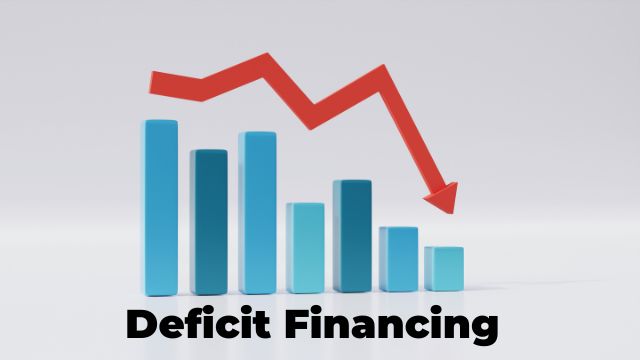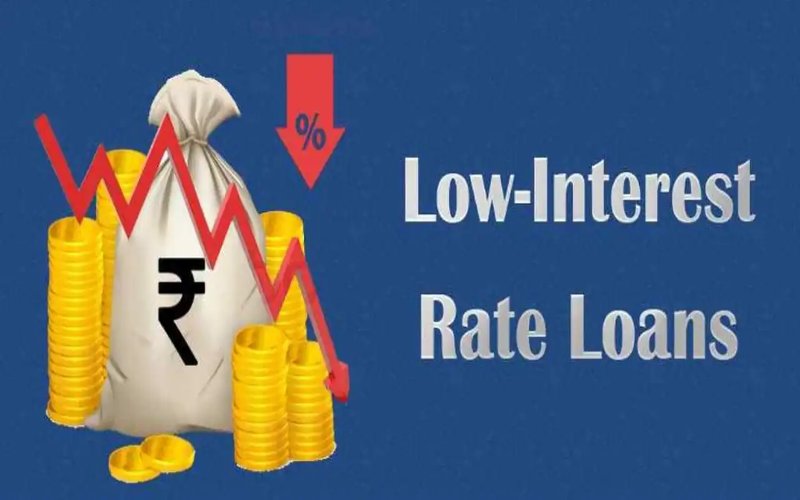Every government has certain expenses to make. To manage these expenses efficiently, every government prepares an annual budget which gives out the details of income and the expense at the government level. Sometimes, a government may spend more than the annual collection or the income, which creates a deficit. These expenditures might be considered critical for growth, defence or any other purpose.
The government must also outline a plan to meet the deficit in such a case. There are different ways in which the government may choose to cover that deficit. The popular ones include issuing the bond to borrow money from the public, requesting RBI to issue more currency or withdrawing cash from RBI. Sometimes, the government may use ad-hoc Treasury Bills to get the required finances. This policy, where the government arranges to cover the deficit, is called deficit financing.
What is the Need for Deficit Financing?
The government needs to spend extra on various activities to maintain growth in developing economies like India. Moreover, there are times when the government may not have funds to carry out the usual economic activities. To meet the fiscal deficit, governments across the world use deficit financing. Deficit financing can help the government maintain the growth rate, and at the same time, it can also help the government in meeting the financing targets. Many governments may see deficit financing as a tool to meet expenditures required for rapid growth. There can be other reasons, such as government inefficiencies or additional expenses on non-developmental-related activities, which can also lead to a deficit. Thus, the government may use deficit financing to cover these expenses.
The government may use deficit financing to cover the additional expense during a war or a natural disaster. In addition, the government may also want to increase spending during the depression or recession to benefit the people. Even in such steep increases, the government may request deficit financing. Apart from this, there are times when the government may want to improve the efficiency of resources by spending a little extra. The government will use deficit financing to cover the fiscal deficit in such cases. Lastly, the government may use deficit financing to give a push to the infrastructure of the country.
- Also Read: Lease Financing Advantages and Disadvantages
What Are Different Types of Deficit and Deficit Financing Ways?
There are three types of deficits the government may face. At any given time, the government may experience one or more types of deficit. All these cumulatively lead to a budget deficit. These deficits are –
- Fiscal Deficit – Fiscal Deficit is known to be the difference between the total expenditure and the total receipt. This excludes the borrowings. The expenditure should be more than the total receipt. The receipts only include revenue receipts and capital receipts. This deficit calculates the total excess money the government will need during the year.
- Primary Deficit – The second type of deficit is the primary deficit. This can be calculated by subtracting interest payments from the fiscal deficit. The primary deficit doesn’t consider the interest payment on the prior loans that the government has taken.
- Revenue Deficit – The revenue deficit is the difference between the revenue expenditure and revenue receipts. The deficit is only considered when the total expenditure exceeds the revenue receipts.
Deficit Financing in Developed Economy
We have discussed deficit financing in developing nations, but do you know that developed countries also need deficit financing? Yes, that is right, deficit financing played a major role in developed counties, especially during the Depression. During such times, the government increases its expenditure to increase demand and income levels. This is a proven technique for bringing the economy on track. The demand can increase with the help of cash infusion and eventually help with some of the metrics during the depression.
Deficit financing is indeed inflationary, but sometimes, that is required to deal with stagnation. This is more prominent if the government asks the central bank to print more money to deal with the deficit. This form of deficit financing is like a dual-edged sword. Inflation needs to be balanced with a mix of monetary and fiscal policies. In most countries, their central bank decides on making these changes to the policy.
Advantages of Deficit Financing
- Easy to Cover Deficit – The first and most significant advantage of deficit financing is that it can cover the deficit in the easiest way. This is also the fastest way to cover the deficit financing and help the government meet the expenses. Such techniques come to be very handy during the contingent time.
- No Immediate Burden on Tax Payers – Here, the government is borrowing from the public by issuing bonds or using the money it has saved with the central bank. In such a case, there is no immediate impact on the people. The government may be able to cover the deficit using the additional income it will generate. Moreover, in the case of bonds, the government will compensate people with interest payments. Apart from this, if the government uses its saved funds, there is no future impact either.
- Improves Efficiency – Deficit financing helps the government in fully utilizing underutilized resources. In addition, it may also encourage the government to put the underutilized or underemployed resources to better use. This may help the economy by creating new jobs. These funds can also push productivity to new limits.
- Economic Growth – The government might use these funds for infrastructure growth or other high-growth projects. This can translate into higher economic growth. Moreover, economists also link deficit financing to inflation; as per a general viewpoint, inflation is a necessary evil for economic development. Due to the economic growth, the investments in the country, including the FDI, may also increase.
Disadvantages of Deficit Financing
- Inflation – The first and primary disadvantage of deficit financing is the rise in inflation. In the previous section, we have shared how inflation is a necessary evil, but at the same time, if the country is already experiencing high inflation rates, then deficit financing can cause further trouble to the people.
- Income Gaps – If the government is infusing more funds into the country, then the rich may be able to take advantage of it in a better way when compared to the middle class or the poor. In such a case, there will be an increase in the income gap between these income groups.
- People’s Saving – If the government is habitually in deficit, then there is a possibility that the government will have a mounting interest. The government will eventually increase the direct and indirect taxes to meet these interest expenses. This will reduce people’s savings, and it will impact some people’s livelihood.
- FDI & Investment – The last point that we would like to mention is that if the government is using deficit financing every year and the targets are met by borrowing, it can also send a negative signal to foreign entities, eventually resulting in lower foreign direct investment. High deficits across many years may be linked to government inefficiencies.
Final Verdict
Deficit financing is an important technique used by many countries. This is more prominent in underdeveloped and developing nations. This can be a successful measure, but years of continuous financial deficit can become problematic. The economy can spiral down into circular debt, and it can eventually default on its liabilities. Countries can use this powerful weapon to their advantage. Still, there have to be economic and industrial reforms to eventually cover up for these deficits and eliminate the use of deficit financing.
The elimination of deficit financing can be started by first controlling the magnitude of deficit financing. For example, deficit financing should only be used for the economy’s needs, and the surplus money line should be created to meet the deficit in future. In addition, governments would also need to work at controlling inflation while they are implementing control measures in any economy.















